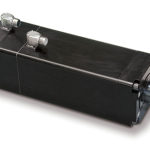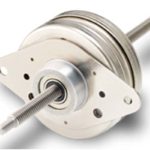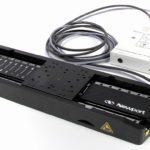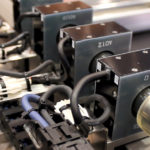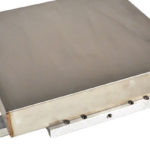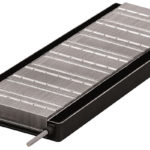Like many terms used in the linear motion industry, such as “heavy duty,” “miniature,” and “corrosion-resistant,” to name a few, there is no industry standard that specifies what constitutes a “high-speed” linear actuator. Nevertheless, there are some general guidelines that manufacturers follow when classifying and marketing their actuators as high speed. These guidelines are typically […]
Linear Motors Archive
Get the latest product news, technical info, and FAQs about linear motors.
What are can stack linear actuators?
Can stack linear actuators are based on can stack stepper motors, which are a form of permanent magnet steppers that consist of two stators (and therefore two coils) stacked on top of each other. The poles of each stator are “claw tooth” design and are offset from each other by one-half of the pole pitch. […]
MKS offers Newport high-performance (linear-motor-driven) Delay line stages
MKS Instruments now sells Newport DLS Series high-performance linear actuators called Delay Line Stages. The DLS series features affordable high performance linear-motor-driven stages with integrated motion controllers. Optimized for retroreflectors, repeatable femtosecond positioning and exceptionally fast traverse speeds, the compact stages are a perfect fit for spectroscopy applications that require single or multiple delay lines. With travel […]
Podcast: Scott of Nippon on iron core, U-channel, and tubular linear motors
In a recent Technology Tuesdays podcast, Brian Scott, application engineer at Nippon Pulse America, talked to me a little bit about linear motors including iron core, U-channel, and tubular linear motors … and the benefits and drawbacks of each. He also shed some light on the major design objectives OEMs cite when migrating axes to linear motors. Click here […]
What are linear stepper motors?
Like most linear motors, a linear stepper motor is essentially a variation of the rotary design, cut radially and laid out flat. Similar to their rotary counterparts in operation and performance, linear stepper motors are typically run as open-loop systems and are capable of providing high resolution at high speeds and accelerations. The linear stepper motor almost exclusively […]
Nippon Pulse small-forcer linear servo motor for high-density applications
Nippon Pulse America Inc. now sells one of the smallest available linear motors for high-density applications — the L250SSS Linear Shaft Motor. It is a 25-mm-diameter linear servo motor with a single winding and our smallest available forcer – only 30mm in length, and with higher force than competing off-the-shelf motors. Its maximum usable stroke reaches to […]
Why use linear-induction motors — and could they drive Hyperloops one day?
Contributed FAQ courtesy H2W Technologies || Linear-induction motors work in applications that require rapid movement of large payloads. Linear-induction motors can output speeds to 1,800 in. per second (45 m/sec) or more … … and accelerations from 3 to 4 g. Standard LIMs can produce forces in the range of 720 lb (3,200 N) at a 3% duty cycle. […]
How do linear induction motors work?
Contributed FAQ courtesy H2W Technologies || Think of linear induction motors (LIMs) as rotary motors that have been cut and unrolled to generate linear instead of rotary motion. Linear induction motors are comprised of two parts, the primary and secondary, which interact with one another only when power is applied. Either the primary or the […]
Direct-drive linear motors with integrated encoders offer resolution to 1.25 µm
Moticont has added two linear motors to its SDLM Series of high-speed direct-drive linear motors. These compact drives with a 1.0 in. (25.4 mm) stroke are just 1.00 in. (25.4 mm) in diameter and 3.75 in. (95.3 mm) long. These direct-drive linear motors feature resolutions of 5 µm (0.000197 in.) and 1.25 µm (0.000049 in.) […]
ETEL expands linear motor line
As engineers expand their range of machines to a point where a larger payload is required, an upgrade of their linear motors may be necessary. So, to make their design process easier, ETEL has added extra ironcore linear motor lengths to each of their different widths. These new lengths are compatible with existing 50, 70, […]

